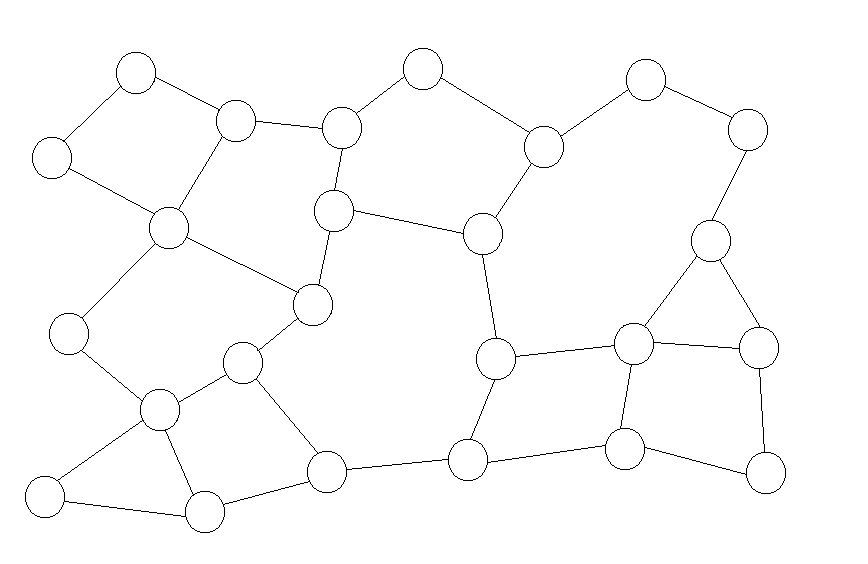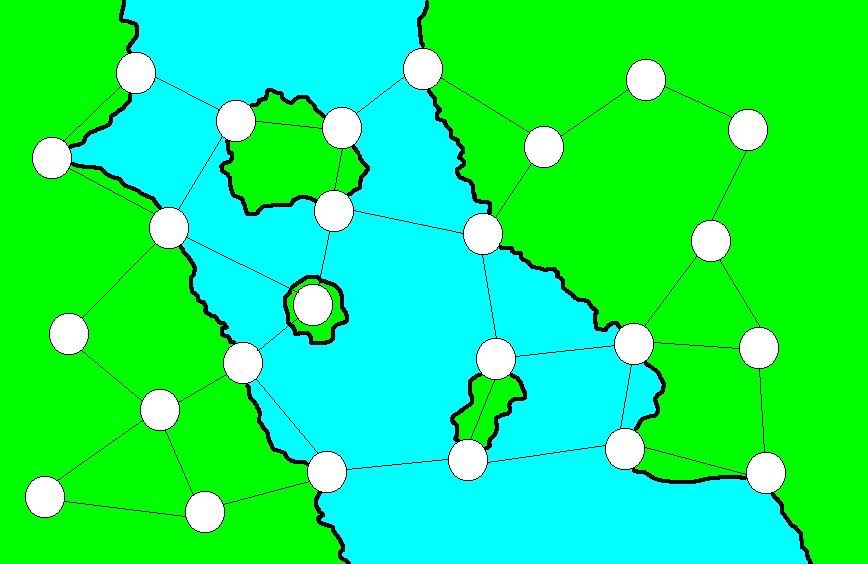Apologies if there's stuff here that you might already know, but a while back I wrote a guide to campaigns: and because that's the thing I love above all in gaming, here it is in full. It was originally written for 40k, but has been re-jigged to remove all 40k-specific references. It's still aimed at sci-fi gamers but there's nothing really in it that can't be easily adapted to Fantasy (or any other setting). Sorry if it's over-long.
Anyhow...
Notes and suggestions for organising campaignsYou need to ask yourself various questions before you begin. How long will the campaign be? How many players do you have? How many armies do you expect to use? What terrain and boards do you have? How many, how big, what are they done up as (grassland, urban, snow, that sort of thing)? Will your games be small, medium, large, or some combination? Will you be using rules outside of the main ruleset to simulate aerial or deep-space combat?
What is the scale of the campaign? Are you thinking one planet, one system or a whole sector? Or are you thinking smaller and going for a continent, region or city? It doesn't really matter for the coherence of your terrain collection at any scale between a spatial sector and a continent - you can as easily justify ash wastes, jungle, snow and desert terrain as existing on the same continent as you can say that they represent four different planets - but it's perhaps more difficult to say that they're different sectors of the same city or region.
Find out what the other players are into. Discuss the campaign with them. If you find out they all love the Magnificent Seven, have a scenario where a small force of heroes is battling a horde of baddies for control of a vital outpost. If they're fans of the Sound of Music, have a battle where a small commando team has flee nasty searchers (while singing). These battles can be either part of the normal sequence (eg player 1's attack on player 2 generates the Magnificent Seven scenario etc), or tied to specific locations (eg, the Magnificent Seven scenario is tied to defending the Research Station at Harg Pass), or be 'outside' the normal sequence. This will to a large extent depend on what kind of campaign you decide to play.
What sort of campaign?There are several different ways you could organise the campaign.
'Map-based': this is probably the easiest for a multiplayer campaign, of 2-6 players. There are thousands of maps you can pull from the net to battle over. If you're stuck, get a map of wherever you live. Draw lines on it to divide it into territories. Lots of territories. I reckon you need 5-10 times the number of players you have (ish). So 4 players = between 20 and 40 territories more or less.
If you do go with a map, I'd say the easiest way to start is get all your players to roll a die. Highest picks a territory, then next highest, all the way round. Each player should maybe have 3 territories if the number of territories is 10 per player; if it's 5 per player, maybe 1-2 territories to start. Each player should also have the same number of armies as their starting territories. These can be small forces, large forces, or a mix, it doesn't matter as long as everyone has the same types. Armies occupy territories by moving into them. If there is another army present, they fight. It's that simple.
However you can make things more complex if you wish. There could be special rules for movement between territories, supply phases (where the more territory you have the more resources you get), scouting/intelligence gathering etc. The territories could be cities, continents, star-systems, whatever you fancy; certain locations could have special rules or special battles (eg, all battles fought on the Shrouded World of Glarn use rules for fighting in darkness; all armies attacking the Fortress-City of Morvog use rules for attacking fortifications).
'Narrative': this is usually better for two-player (or 3 with a referee) campaigns. All you need to do is come up with a storyline and string some battles along it - eg, first battle is a commando mission where player 1 is trying to destroy an enemy installation prior to an invasion; second battle is another small-scale mision, this time both sides are trying to capture a vital strongpoint; third battle is a larger affair where each side is simply trying to destroy as much enemy materiel as possible; the fourth is another commando mission, this time player 2 has sent a hit-squad to asssassinate the invaders' commanding officer; etc.
The 'movie' scenarios from Magnificent Seven and Sound of Music (though not entirely serious suggestions) would fit best with this kind of campaign. This is perhaps not a very 'balanced' way to play, but in a narrative campaign, that's perhaps not so important. The main thing is the story, not the competition. A narrative campaign, more than the others, is really a collaboration not a competition.
'League': this could be the easiest to organise if you have a fair amount of players, say 6 or more; each player plays every other player twice over a couple of weeks or months. Each win provides (say) 2 resource points; each draw provides 1 resource point. These resource points could be represented by flags for territory, markers for reinforcements, conceptual money for supplies or whatever.
It is also the most directly competitive. If this is what appeals to your players, it might be worth instituting a league even with 4 players. If you do run a league, I'd make it of short duration (no reason why you can't start again though!), and limit opportunities to gain too much by 'spending points'. Otherwise one player is likely to become the 'top dog' and just keep winning.
'Tree': this is probably the most difficult to do easily, and in my opinion doesn't work for more than 2 players - there are way too many variables to calculate. A two-battle tree campaign for two players needs you to prepare 3 battles, because one won't happen; a three-battle campaign needs 7 battles, because four won't happen; a 4-battle campaign needs 15 battles, because 11 won't happen, etc. With more players it becomes a nightmare: player A can battle B, C, or D and win or lose in each case; player B can battle C or D, and win or lose; C can battle D and win or lose. So there are 12 possible results for 2 battles, (10 'don't happen' just in the first round) etc. It's probably the one where there's most likelihood of the person who wins first just continuing to rack up the wins.
RewardsThe amount of 'feedback' is very important in all of these setups, but particularly in the 'League' and 'Tree' types; if you reward the early wins too highly you in effect make it impossible to lose. For example, if the winner of the first battle gets to take +50% pts value to battle 2, they pretty much can't lose. They then get to take +50% to battle 3, meaning another win etc. +10% is probably about enough.
For map campaigns, the more territory you take (resource advantages) the more you tend to open yourself to counter-attack (tactical disadvantage). This in some ways limits the mad feedback effects in other ways of organising, especially if you have to use resources to move - eg, you gain 5 resource points for taking the Shrouded World of Glarn, but you must use 3 of these resource points to cross the perils of space to attack the Hell-Moon of Nazegra, or keep the resources, sit where you are and be attacked next turn. Alternatively, you might have to garrison the territories you've taken; in this case you might still get resources but only if you give up units to 'stay put' in the territory.
In 'Narrative' campaigns, leading to an apocalyptic last battle, the feedback generally kicks in at the end, or somewhat randomly during the course of the story. Eg, in the example of a 'Narrative' campaign above, if the first commando mission is successful, the player 1 could get an extra squad or two in game 2 as they are able to land more troopsin the invasion phase; or if the defender defeats the commandos, they get one or two more squads of defenders; but winning game 3 or 4 might not show an advantage until game 6 (the Last Battle).
Special RulesAs mentioned, you could have all sorts of special rules. If you wished, every single location on a map, battle in a narrative sequence or possibility in a tree could have its own special rules. Battle-specific special rules are not recommended for leagues, though. There the point is the 'level playing field' - everyone should be treated the same.
There could be in-between phases for movement (in a map campaign) and resource-use in map-based and league campaigns. These could potentially be the same thing, such as in the example in 'Rewards' above, where movement costs resources. It may for instance cost 1 resource point to move one unit to a new location - you can move more troops but 'pay more', or move fewer troops but run the risk of not having enough. Or the routes may cost particular numbers of points - the route from Grellbruk to Morvog takes 4 resource points, but it only costs 3 to attack the Research Station at Harg Pass, let's say.
Other uses of resources would be as reinforcements. Perhaps 5 resource points could buy another unit, allow restricted troops to be used, or otherwise affect the number and type of troops at your players' disposal. For instance, only light infantry and scouting troops can be used, until sufficient resource points have been invested to obtain 'specialist' hardware or skills.
In narrative and tree campaigns, these questions are more 'written in' to the battles, but are still there; in effect in a tree campaign, the resources are included in the set up - "if the Plukians win battle 1, the situation in battle 2(a) reflects that victory; if the Nongies win battle 1, battle 2(b) reflects their victory". The special rules of narrative campaigns are part way between map-based and tree campaigns. The battle is 'set' but extra resources or penalties may be used depending on the results of previous battles. We may know in advance that Commander Klugge's Nongian forces will move from Grellbruk to Harg Pass; but if they lost the battle at Grellbruk Bridge - the Plukian Militia destroyed the bridge in time, for instance - Commander Klugge has no tanks; if they won (took the bridge before the Plukians could destroy it), then the Nongian Iron Legion was able to support Klugge's forces and they can use the tanks in the attack on Harg Pass.
Another potential use of resources is for scouting, information gathering, or seizing the strategic initiative. Perhaps the player with the higher resources gets to pick the mission being played, or can chose to deploy first or second, to fire first, or whatever. This could represent the more successful commander ambushing the enemy, spying on his opponent, extracting info from captured prisoners etc. Whichever way, the idea is that success on the battlefield is reflected by increased knowledge of enemy movements and dispositions, and therefore a distinct tactical advantage.
Casualties are another area where special rules can be employed. Indeed, it's difficult to see how things could be otherwise! In any normal tabletop battle game, casualties are usually regarded as 'dead'. But 'dead' in terms of one battle does not necessarily mean dead in campaign terms. In a single game, what the 'death' of a trooper or destruction of a vehicle really means is incapacity to continue in the battle. The soldier may be injured, dazed, unconscious - he may only have lost his equipment or subject to a malfunction! He is unable to participate in the remaining action, but potentially able to recover in time for the next battle.
Casualties should be considered along with rewards; they are two sides of the same coin, and therefore the two systems should not be used together. If the winner of a battle gains extra resources while the loser is penalised, the difference between them will become massive. But as an alternative system to granting rewards for winning, the loser might have to roll a d6 for every model removed as a casualty; on a 3 or more, that model counts as recovered. The winner may return all models to his force for the next battle. By controlling the battlefield, he makes reinforcement easier, is able to give injured troops medical attention more quickly, or can rescue and repair damaged equipment. There are other ways of manipulating this - perhaps both players roll for casualties, the winner on a 3+, the loser on 5+, for instance, but the principle is the same; the loser is penalised in some way for losing.
These are just some of the things that can be considered for a campaign. I hope some of them prove useful.
I also have some simple 'node' maps, though to be honest you're probably better off drawing (or otherwise acquiring) your own. They're more a demonstration of principle than a serious attempt to produce campaign maps. The basic node network can be mapped as land-and-sea, or as star systems. It doesn't actually matter. If you think they'll be any use, please use them.


